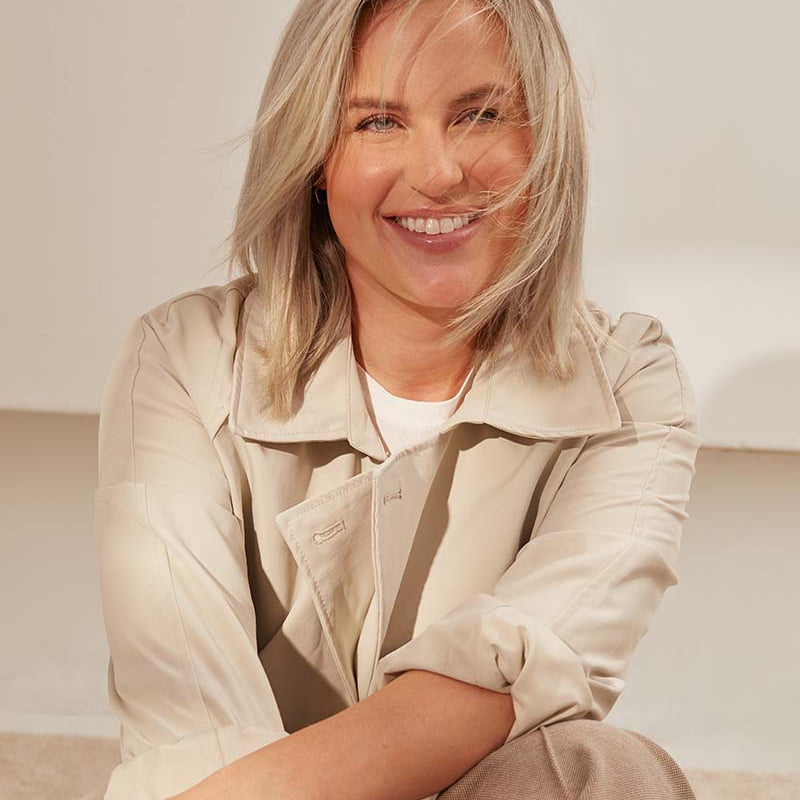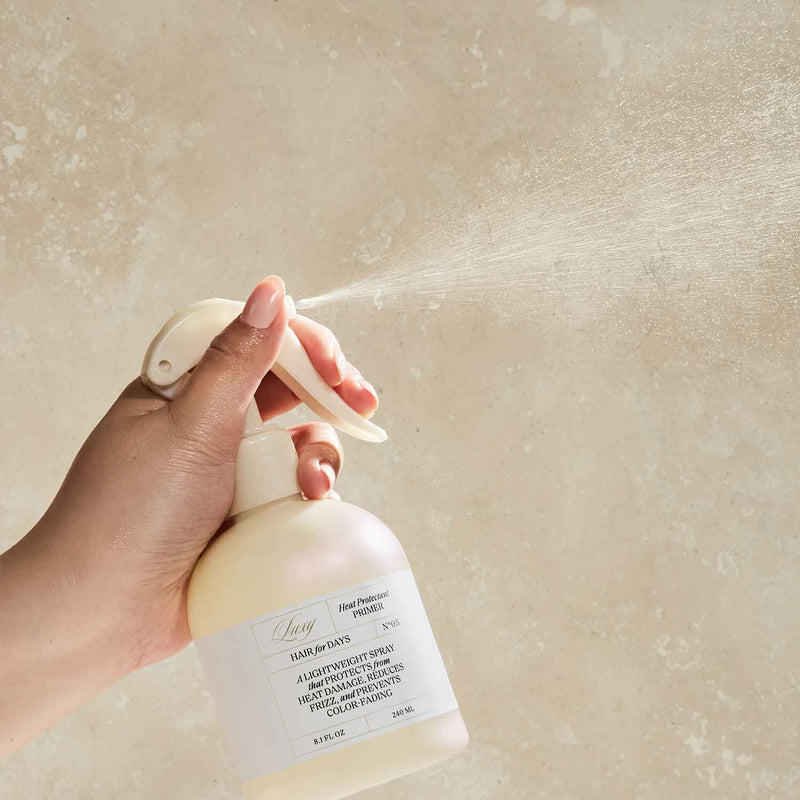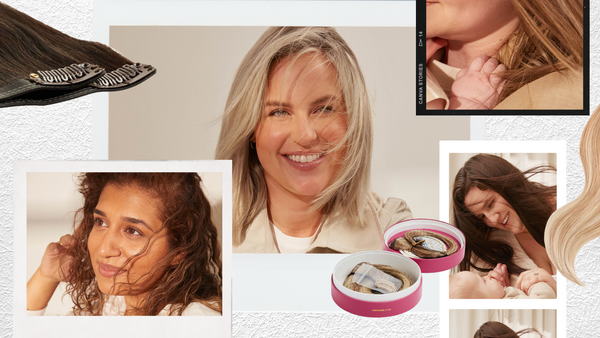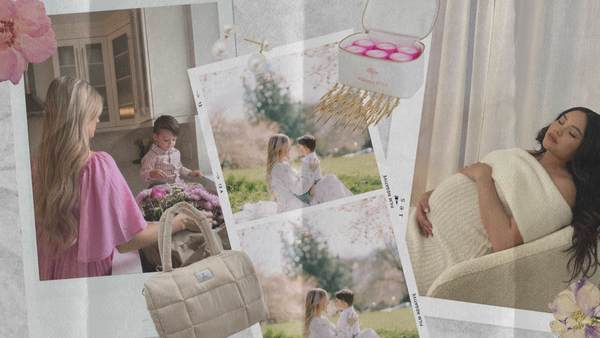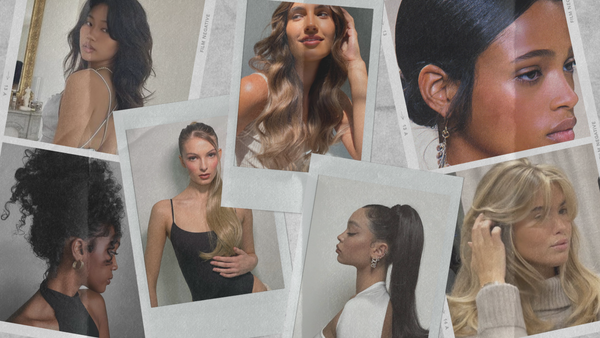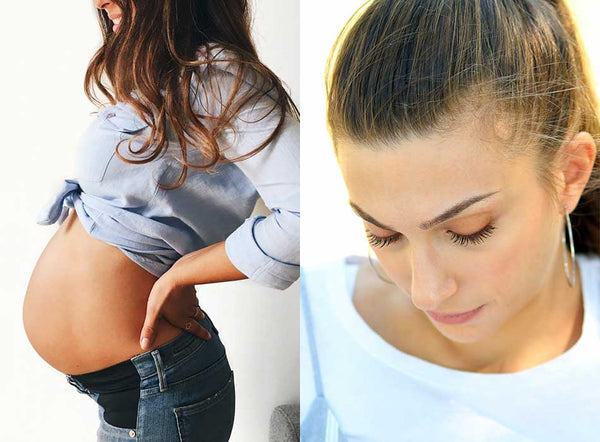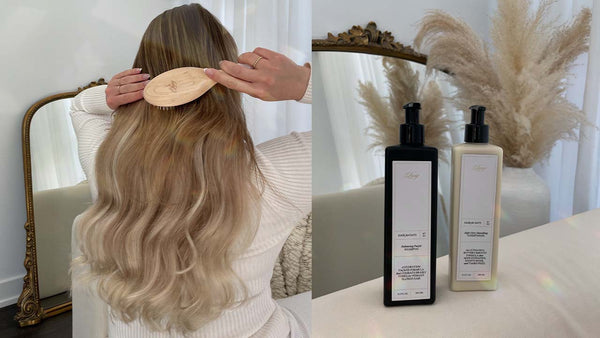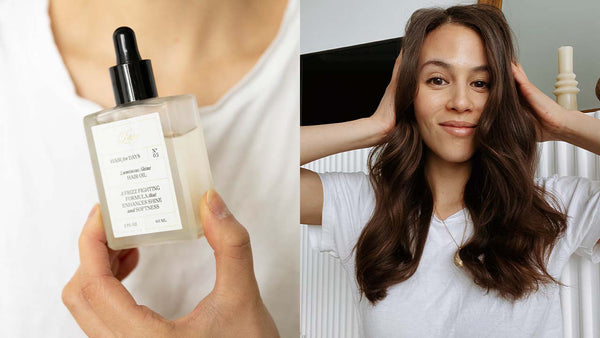The woes of hair shedding, means finding strands of your hair all over your furniture, your clothes and other random places. Hair shedding can be embarrassing, frustrating and let’s face it the extra vacuuming isn’t fun either!
While it's not unusual to lose strands of hair, there are reasons why hair shedding happens. If you're familiar with a tub shroom (the nifty apparatus that catches hairs as their flow down the shower drain to prevent clogging), you've liked asked yourself the following questions: "why is my hair shedding?" Or, "is the amount of hair I’m shedding normal?" In today’s blog post, we’re going to explore the reasons you’re shedding hair, how to deal with hair shedding, and how to stop hair shedding.

Why is my hair shedding?
What is your hair really trying to tell you when it sheds? Just for clarity, there is a difference between hair loss and hair shedding. The good news is that on some level, hair shedding isn’t always something to worry about. In fact, on average a person loses 50-100 hairs per day, which is totally normal. And since we have 150,000 hairs total on average, this means normal hair loss is less than 1% of the strands on our heads. The life cycle of your hair has phases where it grows, rests, and sheds.
If it’s wash day or the first time you’re detangling in a week then expect to lose way more than 50-100 hairs in a week and this is completely normal. However, if you detangle regularly there won’t be an accumulation of hair shedding.

If you’re experiencing excessive, chronic hair loss (over 100 strands for several weeks) or even bald patches, there can also be hidden underlying reasons why you may be experiencing serious hair loss. Hair loss is a common problem for women at different stages of our lives but hair shedding is a completely natural phenomenon that happens to us all continuously throughout our lives. In this post we will be diving into hair shedding and not serious hair loss due to hormonal changes, Trichotillomania, extreme weight loss and other reasons.
Why am I shedding hair so much?
Chemical processing
It’s fun experimenting with hair colour and changing up our look, but colouring our hair too often can come at a cost. Especially if you decide to bleach your hair from a super dark colour to one that is much lighter, you’re more susceptible to the effects of hair shedding due to high levels of peroxide in the dye.
On a scientific level, the harsh chemicals in hair colour products such as ammonia and hydrogen peroxide damage the protein in your hair, which causes it to become weak, dry, and brittle. This harsh dying process leads to loss of elasticity in your hair, hair breakage and ultimately hair shedding.
Another negative effect of the harsh chemicals, they can also burn and damage the scalp which leads to the follicle not holding onto your hair strands as strongly and as a result causing hair shedding. Not only unique to dying your hair, using other chemical processes for straightening your hair or even perming your hair are also damaging and can lead to hair shedding.
Change in seasons

Similar to how your beloved furry friends shed during the winter, seasonal changes also affect how much hair shedding happens to humans as well. Many believe it is for evolutionary reasons that our hair experiences more shedding at different times of the year. Have you noticed more hair shedding in the Fall? Research shows that humans tend to experience the most hair shedding in the Fall (November, December, and the first half of January). This is because the colder temperatures leave hair dry and scalp conditions like dandruff can act up leading to hair shedding. Unlike the winter, during the summer your follicles holds onto the hair in order to protect your scalp from the harsh heat and therefore your hair is thickest in the summer
Overstyling
A culprit of hair shedding is over-styling with heat styling tools like hairdryers, curling wands and straighteners. Using these tools often will cause your hair shaft to become dry and damaged to the point of breakage. Doing this will inevitably cause hair shedding.
Another way you can over-style your hair is by using tight hair ties to tie it up. This doesn’t seem harmful, but hair elastics have a tendency to pull on your hair, stressing it out. If you’re experiencing hair shedding near the hairline, this may be because you’re wearing your hair in tight hairstyles such as tight ponytails. If there’s also breakage in the area where you tie your hair up, this could also mean you are shedding hair as a result of tying your hair up too tightly.
Instead, try a loose, low ponytail or bun to give you hair and scalp a break.
Ways to deal with hair shedding
Figure out the root of the issue
The first step in dealing with hair shedding is ensuring that the amount of hair that you’re losing is the normal amount. A dermatologist can tell you whether you have hair loss or hair shedding. Trying to count the amount of hair strands you lose in a day, is a tedious task (ain’t nobody got time for that).

A quick test you can do at home to see if the amount of hair shedding you’re experiencing is normal is by grabbing about 60 strands of hair in your hand an inch away from your scalp. Then with your thumb and forefinger, pull the hair hard enough to pull up your scalp and slide your fingers along the shaft to the end. Once you do this, count the number of hairs that fall out. If more than six hairs fall out, there could be something wrong and it’s good to get a second opinion from your doctor. If it’s less than six, but you still feel that your hair is shedding more than you’d like then follow our tips below to prevent hair shedding.
Keep calm and carry on: avoid stress

It’s easy to get stressed about hair shedding and start wondering if you’re going bald, or other more serious underlying reasons are causing it. But guess what? Getting stressed will just make hair shedding happen even more. If you are getting frustrated by your hair shedding, try to find some calming activities.
Turn on some Netflix, run a hot bath, and try to reduce any sources of stress in your life. Stress has been shown to kick your hair follicle into the lifecycle phase that makes it shed. Typically there is a delay between when your hair stops growing and when it actually sheds and falls out. Usually you can trace the stressful event back to about three months before the hair shedding started happening. Experience a job loss, a fight with a friend, a bad breakup? These might all be reasons why you’re experiencing hair shedding a few months later.
These life changes can exhaust you and your hair, causing the hair follicle to be undernourished and weak. Increased stress can also trigger scalp problems which cause the follicle to not hold onto hair strands.
How to stop hair shedding
Moms advice: eat your vitamins
The way to be proactive to stop large amounts of hair shedding is by taking hair vitamins to strengthen your hair. Biotin for example can be bought at any drug store and is incredibly effective in helping to strengthen your hair and help it grow. Another vitamin that can help with hair shedding is Vitamin A. This vitamin has retinoids which increases hair growth and even assists with sebum production which coats your hair its natural oils from the scalp, keeping your scalp and hair moisturized. A multivitamin is also important to provide all of the nutrients you will need to help your hair grow long and strong.
Happy scalp, happy hair
Keep your scalp healthy by using conditioner to keep it moisturized and scalp scrubs to exfoliate it. When your scalp is healthy, your follicles will hold onto strands of hair and this will lead to less hair shedding. If you have dandruff or other scalp conditions this may also cause hair shedding, a quick fix is using a dandruff shampoo to keep the scalp moisturized. Keeping your hair moisturized during the wintertime especially is important because of the seasonal changes in hair shedding. Try using a deep conditioning hair mask or even hair oils to give your hair some extra love during the cooler temperatures.
Go natural: avoid chemical processing
Generally, you should avoid chemical processes to straighten, bleach or colour hair. If you do decide to dye your hair, don’t dye it more than one or two shades lighter than it’s natural colour. This will reduce the amount of bleach you’re using and therefore reduce damage. Bleaching and other chemical processes strip the hair of natural oils and can create thin, brittle, frizzy hair. Also, opt to get your hair coloured at a salon versus using low-quality box dyes. As mentioned above, another option is trying hair extensions to get the hair colour you want without the damage.
Too hot to handle: avoid over-styling

Firstly, start by reducing the use of heat styling tools. But let’s be real, you probably won’t be able to quit these tools cold turkey. So, if you must use these tools then make sure you’re using a heat protectant spray to protect your hair shaft from the harsh damage caused by the heat. Also, if your heat tools have settings, lower the temperatures on your tools.
When you wear your hair in tight updos these can also cause hair shedding. Try wearing your hair in loose hairstyles like these cute loose braid hairstyles. Doing this will give your hair some much needed recovery time. When you tie your hair up try using ones that cause less damage, since they typically pull on your hair and cause breakage. For example scrunchies are really popular and a great option to tie your hair up while limiting damage. Some other ways to prevent hair shedding due to hair ties is to avoid tying your hair when it’s wet or tying it up when you go to sleep. Also, swap your hairstyles when you do use hair ties so, you’re not putting stress on the same area of the hair shaft. For example, do a low pony some days and a top knot others.

Everything feels better after a haircut
To help with seasonal changes specifically, getting a haircut at the beginning of the summer will help to remove the dead ends that would have been further damaged by the summer sun. The longer you leave damaged hair on your head, the more you will experience hair shedding and breakage. If you are over processing your hair with chemicals and overstyling your hair, getting
regular haircuts is especially important since you’re damaging your hair at a much faster rate and therefore will experience more hair shedding than someone with healthier hair.
![Why is my hair shedding]() In conclusion...
In conclusion...
Hair shedding is annoying, but completely normal. If you find that you’re shedding excessively then use our advice to determine why it may be happening, how to deal with hair shedding, and how to prevent it.
Reasons such as chemical processing, change in seasons and over-styling are all factors that contribute to hair shedding. Both limiting chemical processing and limiting over-styling are changes you can make in your own hair care routine.
To deal with hair shedding start by figuring out the root of the issue. Is your hair shedding normal or is it a more serious hair loss issue. Another way to deal with hair shedding is by trying hair extensions to give yourself a thicker, more voluminous look while avoiding over-processing due to colouring your hair. Lastly, make sure to keep calm and avoid stress. Stress triggers bodily responses that cause your scalp to shed more hair.
If you want to be proactive and prevent hair shedding, start by taking your mom’s advice and eat your vitamins, they will help to strengthen and grow your hair. Another way to prevent hair shedding is by taking care of your scalp, a happy scalp holds onto more hair! Limiting use of heat styling tools, lowering heat settings and using a heat protectant spray will also help to keep your hair in better quality and reduce hair shedding. Lastly, everything feels better after a haircut. The more damaged hair on your head, the more your hair will break. So if you get regular haircuts you will be removing the damage right at the source.
Fingers crossed that with these hair shedding tips you’ll have less to vacuum, and you can focus on more important things. Because when your hair's on point, you can handle anything.
Written by: Amanda Desouza
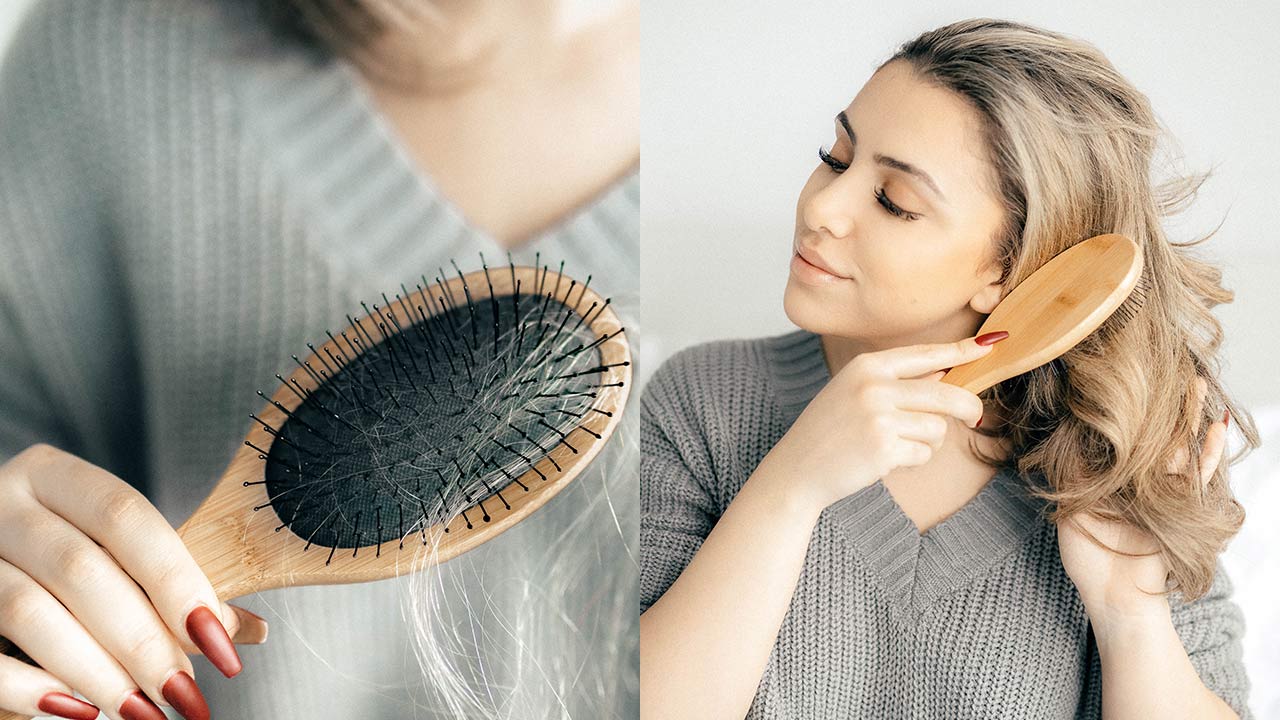
 In conclusion...
In conclusion...
